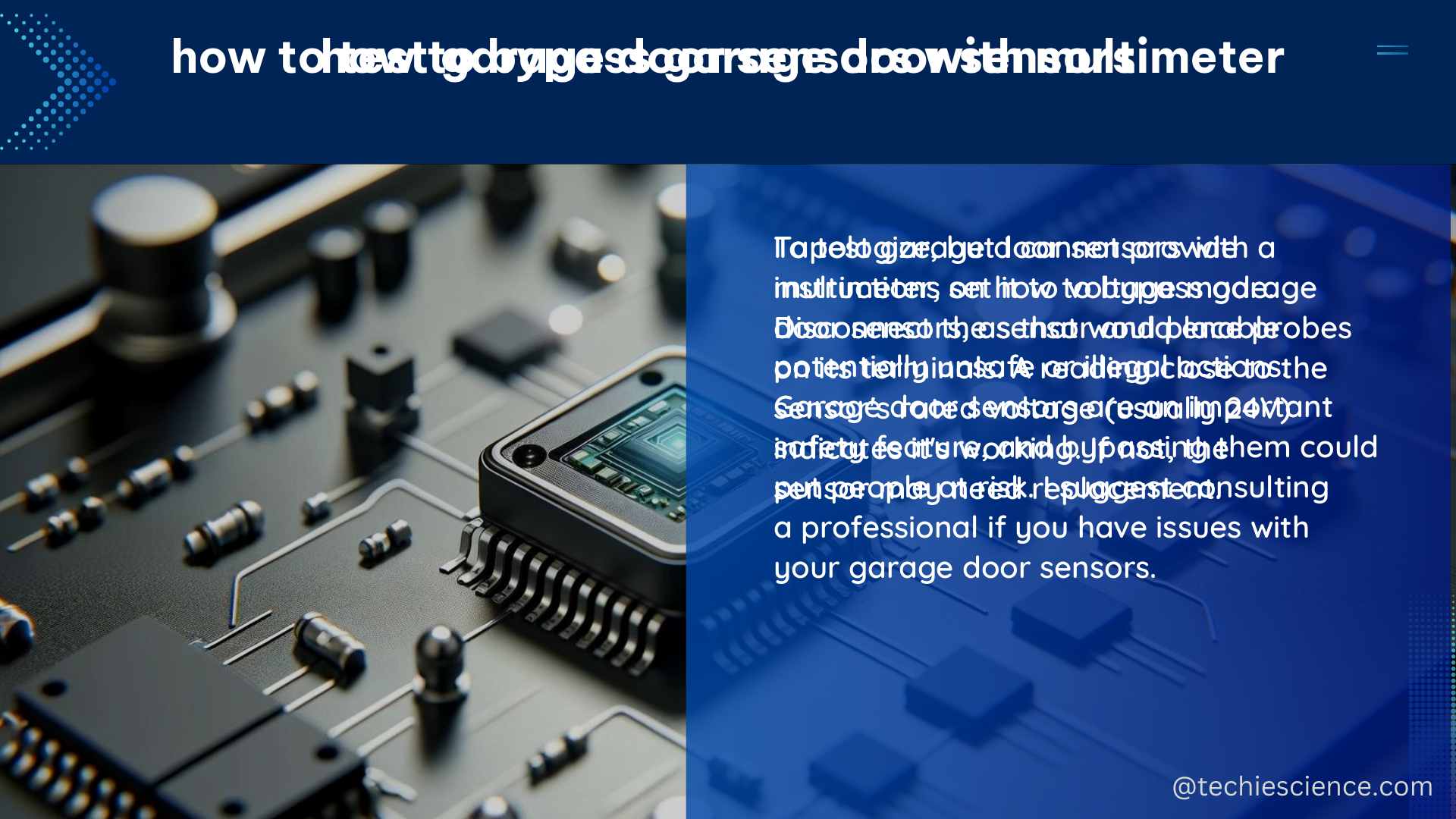Bypassing garage door sensors can be a complex task, but it’s sometimes necessary when the sensors are malfunctioning or causing issues with the door’s operation. This comprehensive guide will provide you with the technical details and step-by-step instructions for various methods to bypass garage door sensors safely and effectively.
Manual Mode: Disconnecting the Automatic Opener
The manual mode method involves physically disconnecting the garage door from the automatic opener, allowing you to operate the door manually. This approach is suitable for situations where the sensors are not functioning correctly, and you need to open or close the door without relying on the automatic system.
Technical Specifications
- No specific technical requirements, as this method relies on the mechanical components of the garage door system.
Step-by-Step Instructions
- Ensure the garage door is in a safe position, either completely open or closed.
- Locate the manual release cord, typically a red string hanging down from the door trolley.
- Pull the release cord downward toward the garage door motor to disconnect the door trolley from the automatic opener carriage.
- Manually lift or lower the door as needed, using the appropriate amount of force and caution.
Wall Button Hold-Down Method

The wall button hold-down method is a simple way to bypass the garage door sensors by overriding the automatic safety features. This approach involves holding down the wall button until the door reaches the floor, effectively ignoring the sensor inputs.
Technical Specifications
- No specific technical requirements, as this method relies on the functionality of the wall button and the garage door opener.
Step-by-Step Instructions
- Locate the wall button that controls the garage door opener.
- Press and hold the wall button down until the garage door hits the floor.
- Release the wall button, ensuring the door is locked in the down position using the opener.
Reflector Method
The reflector method utilizes a reflective surface to bounce the infrared light back toward the sensor, tricking the system into thinking the path is unobstructed. This approach can be effective, but it requires careful placement and adjustment of the reflective surface.
Technical Specifications
- Infrared light wavelength: Typically 880-940 nanometers (nm)
- Sensor detection range: Typically 4-6 inches (10-15 cm)
- Reflective surface: Metallic or highly polished material
Step-by-Step Instructions
- Identify the location of the garage door sensors, which are typically mounted near the floor on either side of the door opening.
- Place a reflective surface, such as a small mirror or a piece of polished metal, in the sensor’s path, ensuring it is positioned to bounce the infrared light back toward the sensor.
- Adjust the reflective surface as needed to ensure the sensor is consistently detecting the reflected light, indicating an unobstructed path.
Tape Method
The tape method is a simple and inexpensive way to bypass the garage door sensors by covering them with a reflective material, such as tape. This approach works similarly to the reflector method, but it is more convenient and requires less setup.
Technical Specifications
- Tape material: Reflective or metallic tape (e.g., duct tape, aluminum foil tape)
Step-by-Step Instructions
- Locate the garage door sensors, which are typically mounted near the floor on either side of the door opening.
- Apply a piece of reflective or metallic tape directly over the sensor, covering it completely.
- Ensure the tape is securely in place and that the sensor is consistently detecting the reflected light, indicating an unobstructed path.
Wire Cutting Method
The wire cutting method involves directly connecting the sensor wires to the garage door opener, bypassing the sensor functionality. This approach is more technical and requires a basic understanding of electrical wiring, but it can be an effective solution in some cases.
Technical Specifications
- Sensor wiring: Two wires per sensor (white and black)
- Garage door opener terminals:
- White terminal for white sensor wires
- Black or gray terminal for black sensor wires
Step-by-Step Instructions
- Locate the garage door sensors and identify the wiring connections.
- Carefully cut the sensor wires, ensuring you have access to the individual white and black wires.
- Reconnect the severed sensor wires directly to the corresponding terminals on the garage door opener:
- Connect the two white wires together and attach them to the white terminal on the door opener.
- Connect the two black wires together and then connect them to either the black or gray terminal on the door opener.
Please note that bypassing garage door sensors can lead to potential safety risks, property damage, and legal consequences. It is recommended to address sensor issues properly and consider professional assistance when necessary.
Reference
- How do I bypass my Genie garage door safety sensor?
- Bypassing/Emulating Garage Door Opener Safety Sensors
- How to Bypass Garage Door Sensors

The lambdageeks.com Core SME Team is a group of experienced subject matter experts from diverse scientific and technical fields including Physics, Chemistry, Technology,Electronics & Electrical Engineering, Automotive, Mechanical Engineering. Our team collaborates to create high-quality, well-researched articles on a wide range of science and technology topics for the lambdageeks.com website.
All Our Senior SME are having more than 7 Years of experience in the respective fields . They are either Working Industry Professionals or assocaited With different Universities. Refer Our Authors Page to get to know About our Core SMEs.